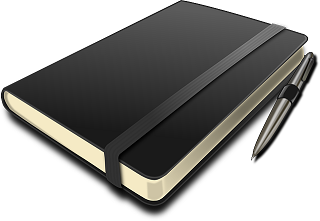Food Journaling Your Way to Health
Logging what you eat in a food journal is a massively beneficial tool to have at your disposal. In fact, we recommend everyone should keep one for at least a week so they can become conscious of what/when they are eating! Got to know what’s wrong before you can fix something, right? This expert post breaks down some great advice for food journaling!
Let’s Start Food Journaling
The power of food journaling is often under-estimated and that statement could not be more true in the world of sport. After all, progress hinges on reflection.
Workout tracking, for instance, is a well-covered category, given the wide array of technologies available that track every variable and allow for notes to be input about each session (e.g. Strava, Moves, RunKeeper, and so on).
However, there’s one category, in particular, that’s often overlooked, but likely has the most significant impact on performance.
That being what you eat and when you eat it.

There are also the race-day benefits, as you’ll be dialed in with exactly what to eat and when.
Of course, the benefits don’t happen overnight. There’s a learning curve and that’s where the journal comes into play.
Ideally, you’ll want to start journaling what and when you eat certain foods in relation to workouts well ahead of your target event – at least 3 months out for best results.
This will give you ample time to test and re-test your findings. In essence, the food journal is akin to an elimination diet.
Here are the how-tos to starting an exercise food journal:
First, you’ll need to establish a pre-workout timeframe. That is, how far out from the intended workout start time will you begin logging notes in your journal.
Given that digestion times can vary based on what you eat and that workout intensities vary from session to session, it’s best to err further out from the intended start time. In general, 2 to 3 hours before a session is good.
Now that the timeframe has been established, you’ll now need to be diligent in writing down everything you eat and drink pre-workout. The more specific you can be, the better (i.e. the exact item and its quantity in grams, ounces, or whatever the unit of measure is).
Also, make note of the time you ate or drank relative to the workout start time. It’s all in the details.
If you plan to eat or drink during the workout, keep track of those items as well! It’s not necessary to know the exact time something was taken, but it is good to have a general eating schedule for workouts (e.g. drink every 15 minutes and eat every 30 minutes).
The goal of that is to give you an idea of how many calories you can take in per hour.
This information is particularly useful in longer runs, rides, triathlons, and the like, where fueling is a critical component to sustained performance.
At this point, you have a journal filled with all the things you ate and drank and when you ingested them. While this is great information, it’s utterly useless without knowing how you felt during the activity.
Therefore, make another column or section in your journal for reflecting on how the workout played out (i.e. “had stomach cramps”, “should have drunk more water”, “felt great”, and so on). Add any other pertinent details and make suggestions for future workouts if need be.
In addition to having a happy tummy, documenting such things will also allow you to be more efficient with your time.
For instance, if you have validated that you can eat a medium-sized banana and 1 tablespoon of almond butter 15 minutes before a workout without having any stomach issues, you could theoretically wake up 20 minutes prior to a swim and be good to go. Or be ready to take on a tempo run during lunch.
It’s not uncommon for previous staples of your diet to get blacklisted as a result of journaling. However, that’s not to say you have to give up any foods in the process.
After all, there’s still the post-workout window.
Wrap-Up
Overall, I regard endurance competitions as eating competitions with physical activity, so if I’m able to solve the food dilemma, my confidence will be at its peak, and a solid performance will follow.
As common racing wisdom goes: “Don’t try anything new on race day.” By following this model, you’ll be well prepared for your next event.
Happy food journaling!
- How To Keep A Food Journal - March 22, 2020